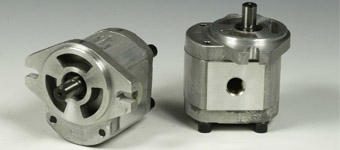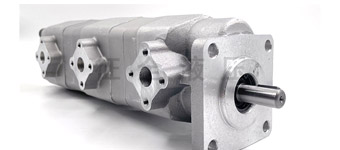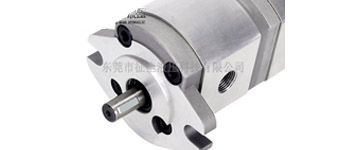Gear pumps and vane pumps, as common fluid conveying equipment, play an important role in both industrial and mechanical fields. They each have unique working principles and characteristics, so they play different roles in different application scenarios. This article will discuss the differences between gear pumps and vane pumps in detail in terms of structure, working principle, and applicable fields.
structural difference
Gear pump: A gear pump consists of two or more gears that mesh with each other, usually one as a driving gear and the other as a driven gear. The rotation of these gears creates a working chamber that is sealed within the pump body, creating a vacuum and pressure that draws liquid in and out. Gear pumps usually have a relatively compact structure and are suitable for the delivery of high-viscosity liquids.
Vane Pump: A vane pump consists of a rotating impeller and a stationary housing. There are several blades attached to the impeller of the vane pump. When the impeller rotates, the liquid is sucked into the gap between the blades, then pushed into the cavity between the blades and the housing, and finally discharged. The vane pump has a relatively simple structure and is suitable for some high-speed, high-flow applications.
Differences in working principle
Gear pump: The working principle of the gear pump is to change the volume of the working chamber through the meshing of the gears, so as to realize the suction and discharge of liquid. The rotation of the drive gear rotates the driven gear, creating a vacuum and pressure between the two gears, allowing the fluid to flow. The delivery flow rate of the gear pump is related to factors such as the size of the gear, the number of teeth and the speed of rotation.
Vane pump: The working principle of the vane pump is to change the volume of the working chamber through the rotation of the vanes on the impeller. The rotation of the impeller of the vane pump creates a series of continuous sealed working chambers between the vane and the housing, and the liquid is sucked and pushed in the chamber. The flow rate of the vane pump is related to factors such as the number of vanes, the shape of the vanes, and the speed of the impeller.
Differences in applicable fields
Gear pump: Gear pumps are usually suitable for liquids with higher viscosity, such as lubricating oil, colloid, paint, etc. Their structure makes them good at handling these viscous liquids. The gear pump has better sealing performance and is suitable for scenarios requiring higher pressure.
Vane pump: Vane pump is suitable for some liquids with high flow rate and low to medium viscosity, such as clean water, coolant, etc. Due to its simpler structure, vane pumps have lower maintenance costs. However, vane pumps may not be as tight as gear pumps, so they may not be suitable for some applications with high pressure requirements.
Efficiency and Energy Consumption
Gear pumps: Gear pumps are generally relatively efficient, especially when handling high-viscosity liquids. However, under some high differential pressure conditions, gear pumps may require more energy to maintain flow.
Vane pumps: Vane pumps are generally less efficient and may experience a drop in efficiency, especially when dealing with high viscosity liquids. But under some low differential pressure conditions, a vane pump may require less energy to move the liquid.
To sum up, there are significant differences between gear pumps and vane pumps in terms of structure, working principle, applicable fields and efficiency. Choosing the right pump type depends on the specific application needs, including liquid properties, flow requirements, pressure conditions, etc. In engineering and design, understanding these differences will help in selecting the most suitable pump to achieve the desired fluid transfer.
 中文
中文 English
English



